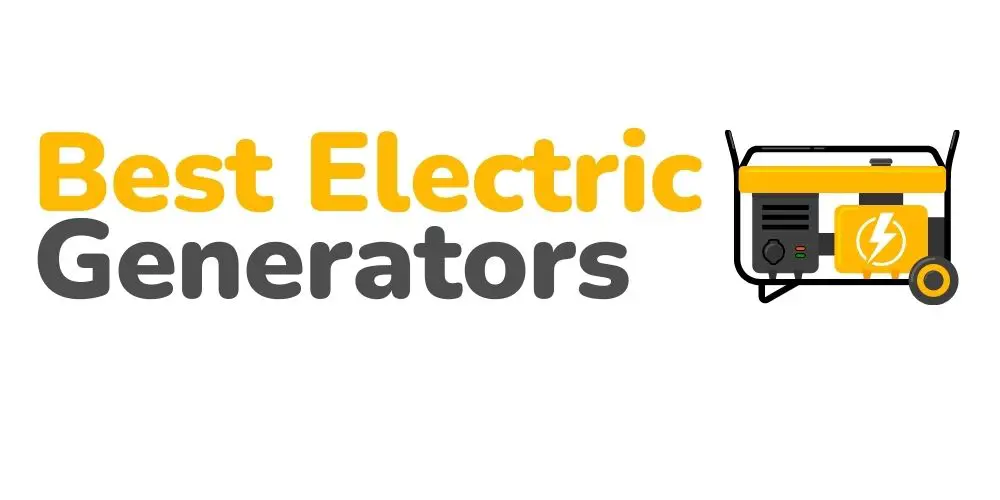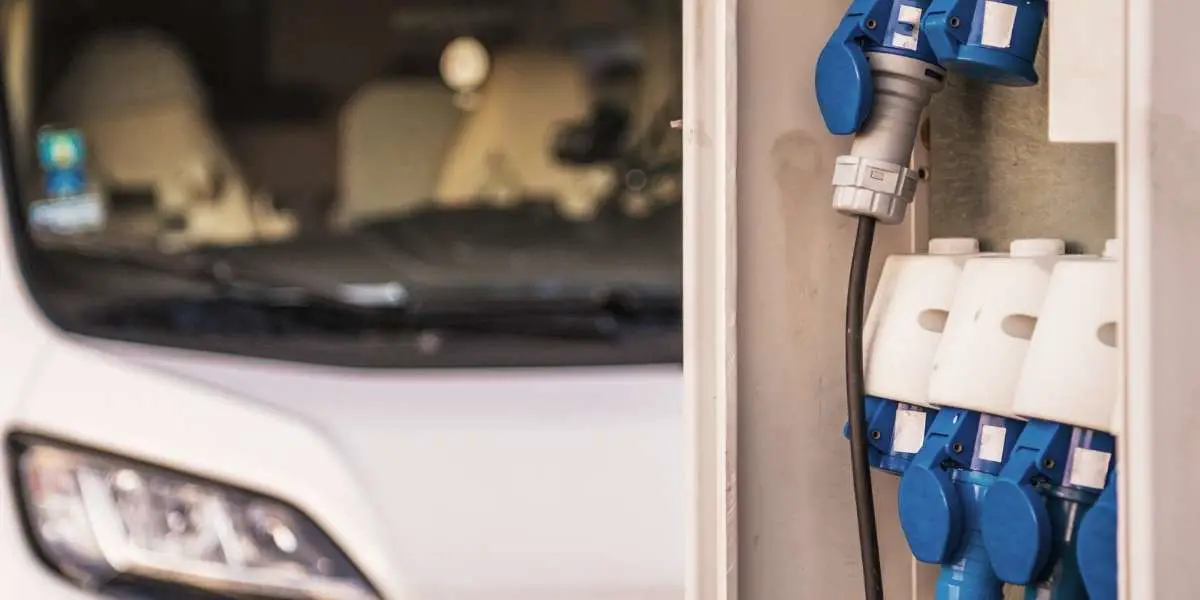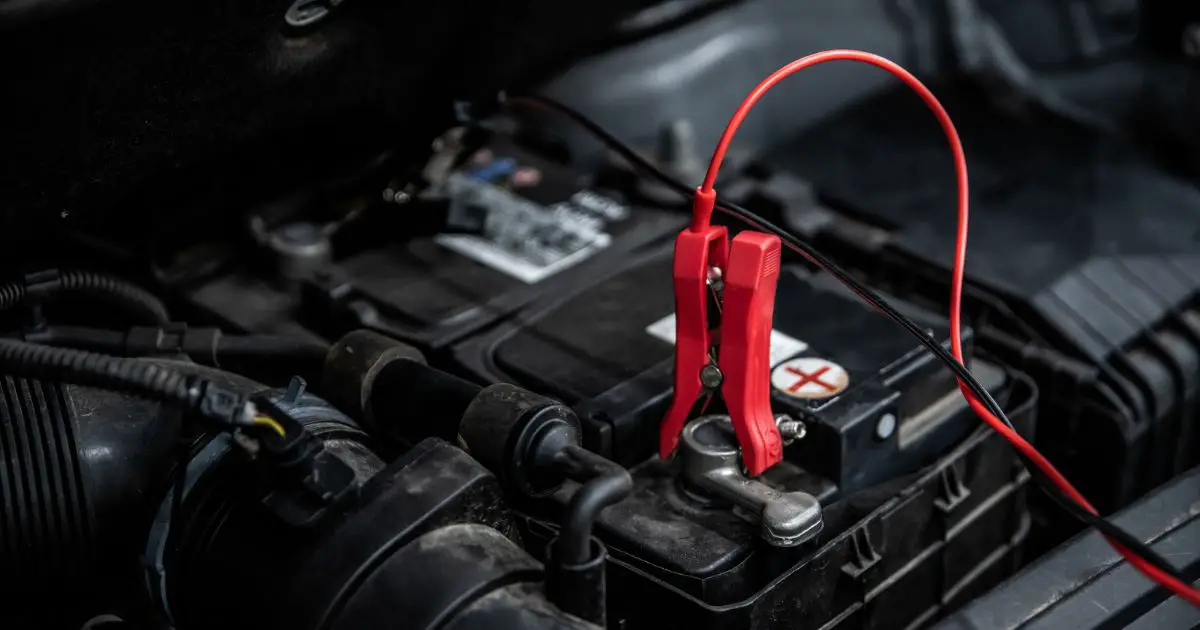To connect an RV to a generator you need to push the grounding rod into the ground where you want the generator to go, connect the grounding rod’s copper wire to the portable generator. Direct the exhaust from the portable generator away from the RV and connect the generator connection cord from the RV to the portable generator.
In this article, I will help you learn how to plug RV into generator, along with sharing details on the best adapters that can be used for different setups.
How To Connect RV Into a Generator?
Follow the steps below to connect your RV to the generator
- Push the grounding rod into the ground where you want the generator to go.
- Connect the grounding rod’s copper wire to the portable generator.
- Direct the exhaust from the portable generator away from the RV.
- Connect the generator connection cord from the RV to the portable generator.
- To supply power to the RV, start the portable generator.
Different Adapters for Different Setups
If Your RV Has a 15-Amp Plug
Some contemporary teardrop trailers and vans feature a normal 15 or 20 amp plug instead of a 30- or 50-amp connector.
This means you can simply hook your little camper into a generator using a conventional extension cord. A cable like this one is a perfect option for usage outside that is also safe.
It’s a 10-gauge, 3-prong extension cable that comes in lengths of 25, 50, and 100 feet. When compared to other extension cables, one of the greatest features is that it includes a light that indicates if it is getting electricity or not.
It can take up to 1875 watts because it’s a 15A 125V cable. You might use this connection to power a smaller air conditioner if your generator allows it.
If Your RV Has a 50-Amp Plug
A 50A plug is generally found in large RVs, travel trailers, and fifth wheels. Larger air conditioners (often many) and more power-hungry equipment, such as a domestic fridge, microwave, and other appliances, necessitate it in these vehicles.
The Camco 15 Amp Male to 50 Amp Female is required to connect the 50 amp plug connection to a generator that has a 15-amp AC outlet.
This adapter may be used to plug your camper into a generator as well as campgrounds with only a 15A outlet or if you’re visiting a friend’s house and want to utilize their outlets.
A 50-amp electrical cable, such as the Camco 50M/50F Locking Adaptor, would be used with the adapter.
You need this adapter if you have a Honda generator with an L5-30 twist-lock 30A outlet.
If Your RV Has a 30-Amp Plug
Travel trailers and fifth wheels frequently use the 30-amp plug. At a campsite, it’s also the most popular plug. While there are 30A connectors on gas generators, most generators only have 15A or 20A outputs; thus, you’ll need an adaptor to link your camper into it.
Suppose you’re using a dogbone adapter, such as the Camco Heavy Duty RV Dogbone 15A to 30A. In that case, you’ll see that Camco provides a variety of adapters for various layouts, but this is the one that will allow you to connect a 30A trailer to a 15- or 20-amp outlet.
With a connection like the Proline Heavy Duty 30AMP RV Power Cord, you can connect the generator to a 30-amp trailer/fifth wheel. You can use a 20A to 30A converter instead if your generator has a 20A output.
A Malxs 15A Male to 30A Female Adapter might be used if you prefer a 15A extension cable. You might utilize this iron forge cable to do this. If your RV or camper has a built-in power cord, you’ll simply need to utilize the Camco dogbone adapter.
When you have a generator that uses the 50-amp plug
If you have a generator that uses this plug, you can make use of the normal 50A cord. But sometimes it differs, like when your trailer has a 50A plug, but your generator has a #0A plug. So, what do you do in such a case. Then a Camco RV 30 Amp Male to 50 Amp Female Adapter is required.
This converter would be plugged into your ordinary 50A chord, which would then be plugged into the generator. You’ll be required to have this adapter or a 30A 4 Prong to 50A female if your generator has a 30A twist-lock connection. Check the number of prongs on the outlet of your generator to ensure you get the right adapter.
Sometimes your trailer might have a 30A plug, while your generator has a 50A plug. In this case, you’ll need the Camco RV 50 Amp Male to 30 Amp Female Adapter. Your 30A cord would be plugged into this converter, which would then be plugged into your generator’s 50A output.
What Other Adapters are Good to Have?
You may use the same adapter to connect your 30/50A trailer into any 15A outlet you come across, or at home in your garage, in addition to plugging it into a 15A AC outlet on a generator.
The Camco 30 Amp Male to 50 Amp Female adapters is also important if you visit campgrounds with connections since it allows you to plug your 50A trailer and cable into a 30A campground outlet.
There’s also the Camco 50 Amp Male to 30 Amp Female, which works differently. If you’re staying at a campsite with just a 50A outlet and no 30A, this adaptor will come in handy.
Final Thoughts
Connecting your RV to your generator is not a long process. This can be easily done by following the steps outlined in this article. You need to ensure that you have the correct type of adapters needed for the process.
I hope this article has helped you get the information you need to get the best adapter for your set-up and connect your RV to the generator.


